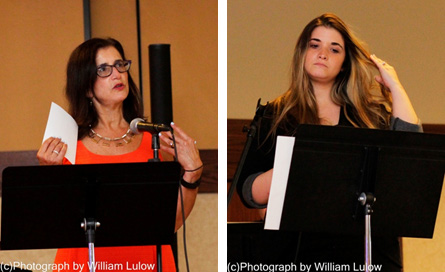
Whenever there isn’t enough light present to make a picture, the flash on your camera will probably pop up so that you will have enough to make a “proper” exposure. (If you use your camera on AUTO).
Isn’t this great? If there isn’t enough light, light gets added automatically! What could be better?
The problem comes with the kind of light these pop up flashes provide. If your unit is attached to your camera, it is called an “on-camera” flash. If the unit is part of the camera, it's called a "built-in flash." And, although it will usually light the scene in front of the camera, the light it makes is:
- Harsh
- Direct
- Specular
- Comes from camera position
- Doesn’t light the background
- Usually is not strong enough for specialized uses
What makes the light harsh?
- It is aimed directly at your subject
- It is of very short duration
- It is not diffused or bounced
It casts harsh shadows on every other part of the subject
What makes it direct?
- It is coming from the camera position
- It is not changeable
- It produces a very flat type of light which simply lights the subject
What makes it specular?
- The flash on the camera is usually quite small compared to the subject
- It acts as a “point” light source
- It causes bad reflections on shiny objects and even on people’s faces
- It will cause “red eye” which is really the reflection of the retina in a person’s eye because the flash point is so close to the axis of the lens itself
Why doesn’t an “on camera” flash light the background?
- Since it is attached to the camera, the strength of the flash will only go as far as the subject
- Backgrounds will be black because the flash only measures lamp-to-subject distance
- Even automatic flash units will only measure lamp-to-subject distance.
So, as your photographic expertise grows, you will want to do away with most on-camera flash situations in favor of using off-camera flash setups.
Most camera manufacturers make flash units that can be used off-camera. They can be connected to the camera with a special wire or wirelessly. There are specialized brackets which take the flash off the lens axis and elevate it to approximate a “Hollywood” type light. This eliminates red-eye and gives the subject a more overall light. It is still harsh in nature, but at least it is coming from a different direction. The thing to strive for is to have flash units that are attached to light stands that you can move around to create different types of lightings and moods. Work with ONE LIGHT AT A TIME until you see what the effects of that light are. Then you can expand your lighting arsenal to more lights.
With all this said, you can also use your on-camera flash in bounce mode together with some kind of diffusion. This will soften the light and make the space look more normally lit instead of with that typical glaring flash look. Bouncing your flash off the ceiling or a nearby wall uses the ceiling's entire surface as a light source. That's why it appears softer. Bouncing your on-camera flash though, reduces its power. So, to achieve a properly lit room, you will have to increase the exposure by opening up the lens, slowing down the shutter speed (not always recommended where people are in the shot), or increasing the ISO number or a combination of the three.
Here are some examples of bounced light I used at a recent event:

Since there was very little light in this room, both were shot with relatively high ISO’s. The ceiling was a light color (not actual white) and the flash was placed on the camera but aimed up at the ceiling and tilted forward just a bit. I do this so that a little of the light will be directed at the subject, but most of it is bounced. Note the soft quality of both shots and, of course, no shadows!
Keeping all this in mind, for better images, start thinking about taking your speedlights off the camera.









